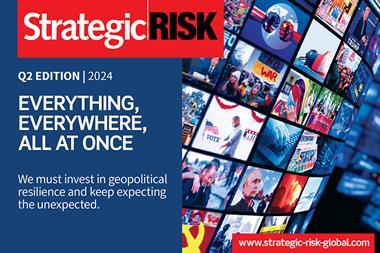Climate change demands the insurance industry to take a much longer view of risk, argues Jonathan Guard, director, commercial markets, LexisNexis Risk Solutions UK and Ireland
It is very clear that the risk profession and insurance industry needs to prepare for climate extremes. The challenge is that the primary insurance market tends to take a short, 12-month view of risk.
I recently spent three weeks in Sydney, Australia and saw the sun once during that time due to the smoke enveloping the city. Bushfires started much earlier than usual last year wreaking havoc in large parts of country. Then in a ‘climate see-saw,’ some regions of the country faced extreme floods.
We have also seen fires sweep across California, and Greece has been subject to severe drought in recent years.
Back in the UK, Storm Ciara and Storm Dennis were much more short-lived but occurred just six days apart and saw heavy rain and gusts of wind up to 97 mph causing widespread flooding, damage to homes and major disruption to transport networks.
These examples of extreme weather events are adding to mounting concerns over how our climate is changing. The planet is increasing in temperature with the ice caps melting at an alarming rate.
Some precautionary measures to help deal with climate change are already starting to take shape in the industry, such as Flood Re in the UK and the National Flood Insurance Programme in the US.
The European Union may also start to force insurers to report more information on climate risks and show greater resilience to natural disasters caused by climate change.
Preparation starts with education
Up until around ten years ago, it was the reinsurance markets who dealt with catastrophic weather losses and absorbed most of the costs, and the primary insurance protected businesses and homes. However, as climate change and more frequent natural disasters take a hold on the industry, it means reinsurance costs are becoming more expensive for primary insurers, and those costs are ultimately being passed down to policyholders.
Because of this, the primary insurance market has started to assess risk more accurately at point of quote through a more granular understanding of risk. This in turn is helping the industry to prepare and plan for the growing cost impact that climate change is set to have on the sector.
Preparation starts with education. Schools now include climate change in the curriculum, but how much are insurers and brokers helping their business customers understand the risks they face from climate change?
The commercial insurance sector has a hugely valuable role to play in educating businesses on environmental risks. Insurance providers have a wealth of data on previous catastrophic events and claims losses that can be beneficial to the owner of a property portfolio large or small or a smaller business with decisions to make. This information helps commercial policyholders to understand the impacts from extreme weather for their business location, and with the support of their brokers and insurers mitigate the risks in the future.
For example, insurance providers can help customers to understand whether they need to install flood defences or protect stock, or where to install computer equipment based on the previous claims experience data that they have access to.
Sharing this kind of knowledge changes the nature of the relationship from insurance provider to business protector and advisor. As climate change becomes a risk we face in everyday life, it is likely that businesses will come to expect their insurers and brokers to become specialist knowledge providers to help them mitigate the risks they face.
This education process could also focus around the cost of insurance. At this point in time, the debate around climate change is largely scientific, but the costs of these catastrophic weather events will cause premium increases. Whether they come in the next five years, ten years or even the next twenty years, the cost to insure assets that are at risk from these events is only going to increase.
We have to educate and prepare businesses for price rises and for the fact that premiums could be very expensive if they are in a challenging location.
Finally, looking wider than insurance, part of the planning process needs to focus on making cities more resilient to climate change. The Cross-industry property flood resilience Code of Practice is a great example. Launched in the House of Commons in February, the Code of Practice is designed to make it easier for homeowners and businesses to install measures that protect their properties from flooding.
On a larger scale, the Thames Barrier has done a great job of protecting London but now investment is needed to protect other key commercial hubs at risk of flood. This is going to be a huge task requiring significant investment.
It is vital that the insurance sector works with planners to understand the infrastructure being created and how risks will be mitigated so that businesses will be able to secure the insurance they need, to protect their assets.
It all comes down to knowledge and information sharing. The insurance market already does a good job of this in supporting a smoother customer journey and pricing accuracy in the personal lines space.
The demands for knowledge around claims related to climate change are only going to grow and commercial insurance providers are in a prime position to leverage the mass of data they hold to help insurance remain accessible to the UK’s business community.
Jonathan Guard is director, Commercial Markets, LexisNexis Risk Solutions UK and Ireland




















No comments yet